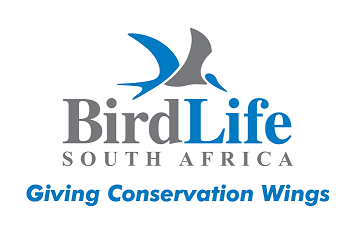Wattled Crane (Grus carunculata)
CAR summary data
Habitat and noted behaviour
Sightings per Kilometre
Please note: The below charts indicate the sightings of individuals along routes where the species has occured, and NOT across all routes surveyed through the CAR project.
Regional Status

Global Status

IUCN Data (Global)
IUCN 2024. IUCN Red List of Threatened Species. Version 2024-1 (www)Assessment year: 2018
Assessment Citation
BirdLife International 2018. Bugeranus carunculatus. The IUCN Red List of Threatened Species 2018: e.T22692129A129880815. Accessed on 10 December 2025.Geographic range:
Bugeranus carunculatus is found in Ethiopia, (c.200 [Beilfuss et al. 2003, 2007]), Tanzania (c.200 [Beilfuss et al. 2003]), Democratic Republic of Congo (probably around 500 [Beilfuss et al. 2007]), Zambia (c.4,500 [Beilfuss et al. 2007]), Angola (c.500, perhaps declining [W. R. J. Dean in litt. 1999, Beilfuss et al. 2007]), Malawi (c.15 pairs [F. Dowsett-Lemaire in litt. 2000, H. G. Msiska verbally per J. Haugaard in litt. 2000] or 40 individuals [Beilfuss et al. 2003]), Mozambique (c.300-400 [Beilfuss et al. 2007, Bento et al. 2007], 120 pairs in the Zambezi Delta region [Bento et al. 2007]), Zimbabwe (c.200 [Beilfuss et al. 2007]), Botswana (c. 111 breeding pairs in a total of 1,200 to 1,300 individuals [Gibson et al. 2002, Beilfuss et al. 2003, Beilfuss et al. 2007, Hancock 2008]), Namibia (c.250 birds [Beilfuss et al. 2003] including probably fewer than 10 pairs [R. E. Simmons in litt. 1999]), and South Africa (300-360 [K. Morrison in litt. 2016]; previously c.235 [Hancock et al. 2003, Mattison 2004, Pittman 2007], with a 35% decline in 20 years [Pittman 2007], but possibly stable or a slight increase since Mattison [2004]). The total population appeared stable from the mid-1980s to mid-1990s (Burke 1996), however when estimates from the 1980s are compared with those from 2006, it is judged to have declined significantly (Morrison and van der Spuy 2006), perhaps indicating declines in the last 10 years. The key Zambian population at the Kafue Flats reportedly fell in the mid-1990s (Archibald and Meine 1996, Burke 1996) and was estimated at c.1,000 individuals in 2002 (Kamweneshe and Beilfuss 2002), but may now be as high as around 2,900 individuals (Shunangu et al. 2015). Significant populations elsewhere in Zambia include the Liuwa Plains (1,900 individuals [Viljoen 2015]) and the Bangweulu Swamps (African Parks Foundation pers. comm. to K. Morrison 2016). The Okavango Delta in Botswana also holds a significant population, of between 1,200 and 1,300 birds (Hancock 2008). The comparison of 2002 estimates with those from 1993 suggests marked declines in Mozambique, Zambia and possibly Botswana (Beilfuss et al. 2007). The substantial reduction in numbers since 1993 apparently reflects real declines at individual sites and regions, although the 2002 estimate may be influenced by an improvement in accuracy relative to previous estimates (Beilfuss et al. 2007). The world population has been variously estimated at 7,700 individuals (Pittman 2007) or fewer (Morrison and van der Spuy 2006, Motsumi et al. 2007), not more than 8,000 individuals (Beilfuss et al. 2007) and 6,000-8,000 individuals (Beilfuss et al. 2003). More recent estimates though suggest that the population is currently >9,100 (K. Morrison in litt. 2016). It exists in three disjunct populations, the large south-central population and small Ethiopian and South African populations (Jones et al. 2006, Pittman 2007), which may be relicts from its former range (Beilfuss et al. 2003).
Habitats:
Behaviour This species is generally not migratory but those that inhabit seasonal wetlands are irregularly nomadic in response to water availability (del Hoyo et al. 1996). The Ethiopian population, however, does appear to migrate locally (Archibald and Meine 1996). It breeds in May-October, leaving the breeding area in November-December when the wetlands dry up, and returning with the rains in May-June (Archibald and Meine 1996). Other populations breed in territorial pairs (Hockey et al. 2005) between July and December with a peak during the months of August and September coinciding with the peak of the floods (Archibald and Meine 1996). The most southerly populations often breed a little earlier in July-August (Archibald and Meine 1996). During the non-breeding season the species is fairly congregatory, occurring regularly in flocks of 10-50 individuals (Johnsgard 1983), and there are reports of flocks of up to 1,000 in the Okavango Delta in April-May (Hockey et al. 2005). Habitat In South Africa this species was found to occupy large home ranges of approximately 16 km2, which consist largely (75%) of grassland with a small core of essential wetland breeding habitat (McCann and Benn 2006). Breeding It nests in shallow sedge-dominated wetlands, often above 2,000 m altitude (del Hoyo et al. 1996). In South Africa and Zimbabwe it breeds on undisturbed small permanent wetlands surrounded by grassland or miombo (Brachystegia) woodland in high rainfall areas with plateau topography (Hockey et al. 2005), where human disturbance is minimal (Archibald and Meine 1996). Ephemeral and seasonal wetlands may be used opportunistically by breeding pairs or serve as important post-breeding dispersal areas (Archibald and Meine 1996). In South Africa it relies on relatively undisturbed mid-altitude wetland-grassland mosaics (McCann and Benn 2006). Elsewhere in its range it breeds on large low-lying tropical, seasonal flood plains such as the Okavango Delta (Hockey et al. 2005) where wetlands are bordered by grasslands (Archibald and Meine 1996). It may use man-made habitats such as dams (Hockey et al. 2005). The Ethiopian population uses high-altitude wetlands in the Bale Mountains (Archibald and Meine 1996). Non-breeding During the non-breeding season the species continues to rely on wetland habitats surrounded by grassland (McCann and Benn 2006). It congregates at large wetlands on riparian floodplains, but also requires pristine or semi-pristine, high-altitude wetlands and grasslands in some places (Archibald and Meine 1996; Barnes 2000; Mitchell et al. 1998). It frequents dambos (depressions), permanently isolated wetlands (Morrison and van der Spuy 2006) and vleis (Hancock et al. 2003) as well as using grasslands, pastures, and occasionally cultivated fields for foraging (Hockey et al. 2005). Dams and pans are used as roosting sites during the non-breeding season (Hockey et al. 2005). The Ethiopian population is less dependent on wetlands during this season, generally moving to drier, lower elevation habitats including ploughed fields (Archibald and Meine 1996). Birds that breed in the Okavango Delta often move to recently burnt ground in the dry season (Hockey et al. 2005). Diet The species feeds on rhizomes, roots and bulbs of sedges (Cyperus and Eleocharis spp. [Bento 2002]), and grass sward and seed (Hockey et al. 2005). It will also take animals including small aquatic snails, fish and frogs (Hockey et al. 2005). Chicks are reported to eat insects (Hancock et al. 2003). Breeding site Preferred nesting sites are where grass and sedge marshes are bordered by drier, flat to sloping grassland meadows, with medium height vegetation and water up to 1 m in depth (Johnsgard 1983). The nest is a large mound of plant material (reeds and sedges), 1 m in diameter and protruding 20 cm above the water surface, usually with a moat of open water about a metre in diameter around it. A significant proportion of nests in the Okavango Delta are on small mud islands two or three metres in diameter, exposed by 20-30 cm as floodwaters recede, and in these cases, the eggs are laid on few pieces of reed or sedge stems. Fidelity to the previous year's nesting area is suspected. The clutch size is one or two (68% and 32% of nests respectively, in Botswana) (Hancock et al. 2003), however only one chick is raised from clutches of two and the other egg is abandoned (Pittman 2007). If a clutch or chick is lost, pairs may attempt to breed again (Hancock et al. 2003). The incubation period is 33-36 days (Hancock et al. 2003). Natural levels of nest predation appear to be high (Nkape 2004). The first-hatched chick leaves the nest on its first day (Hancock et al. 2003, Nkape 2004), and may be particularly susceptible to predation at this time (Nkape 2004). The fledging period is 135 days, but immature birds usually accompany their parents for their first year (Hancock et al. 2003). Reproductive maturity is reached at about the age of seven and the species is monogamous, pairing for life.Population:
Its present world population has been variously estimated at 7,700 individuals (Pittman 2007) or fewer (Morrison and van der Spuy 2006, Motsumi et al. 2007), fewer than 8,000 individuals (Beilfuss et al. 2007) and 6,000-8,000 individuals (Beilfuss et al. 2003). More recent estimates though suggest that the population is currently >9,100, placed in the range 9,000-10,000. This increase though may not be a true increase in the population and further research to better understand the movements between the key flood plains in south-central Africa and the seasonal movements whereby cranes come together in large flocks in the drier season needs to be explored further (Morrison in press). This estimate roughly equates to 6,000-6,300 mature individuals.Threats:
The primary threat is loss and degradation of wetlands as a result of upstream river regulation, intensified agriculture, mining, drainage, invasive species such as Mimosa pigra, and rice cultivation (Burke 1996, W. R. J. Dean in litt. 1999, Kamweneshe and Beilfuss 2002, McCann and Benn 2006, Morrison and van der Spuy 2006, Uys 2012). Other threats include nest disturbance (P. Leonard in litt. 1999, P. Mundy in litt. 1999, McCann and Benn 2006); grass-burning regimes (M. Herremans & R. E. Simmons in litt. 1999, T. Dodman in litt. 2000, Morrison and van der Spuy 2006), though in the non-breeding season burnt floodplains are used for feeding in some areas (Hancock et al. 2003); poisoning; collision with utility lines (Burke 1996); direct consumption of chicks; persecution, and traditional medicine (A. Shimelis in litt. 1998). Increasing livestock farming, wars, desertification and agrochemicals are additional threats to the species's habitats (Morrison and van der Spuy 2006). Nest destruction through trampling by livestock is believed to be a problem (Morrison and van der Spuy 2006). The population is threatened by the illegal removal of eggs and chicks for international trade (Pittman 2007). Adults are also taken for trade and are hunted (Morrison and van der Spuy 2006). The level of exports from Tanzania is believed to exceed known legal exports (Morrison and van der Spuy 2006). The destruction of vegetation by fires probably leaves adults more susceptible to predation and hunting, and flood levels in turn influence the extent and intensity of fires (Morrison and van der Spuy 2006). Recent potential threats that could extensively affect a large portion of the Okavango Delta include the proposed hydroelectric scheme at Popa Falls in Namibia, papyrus cutting, channel modification, and the extensive aerial spraying of pesticide to eradicate the tsetse fly (Hancock et al. 2003). The extent of suitable breeding habitat in the Zambezi Delta (Mozambique) and Kafue Flats (Zambia) and the suitability of remaining habitat for feeding is believed to have declined as a result of the interruption of the natural flooding regime by the Cahora Bassa (Tete province), Kariba (Zambia/Zimbabwe), and Itezhi-tezhi (Zambia) dams upstream, and hunting is also a threat in this country (Parker 2005, Bento et al. 2007). Breeding success appears to be low in the species (Hancock 2003, Mostumi and Hancock 2004b). A pre-fledging chick:adult ratio of 5.8% on the Okavango Delta in January 2003 indicates a low chick survival rate (Hancock 2003). However, each pair of this long-lived species needs to raise only two chicks that survive to adulthood over the course of their lifetimes for the population to remain stable (Hancock et al. 2003). The species is highly sensitive to human disturbance and may abandon home ranges which are impacted by adjacent land-use (Morrison and Bothma 1998).Conservation measures:
Conservation Actions UnderwayCITES Appendix II. CMS Appendix II. Protected areas (including Ramsar Sites) have been established in several key wetlands, notably in Zambia, Namibia, Zimbabwe and Botswana (Burke 1996; T. Dodman in litt. 2000; T. Fakarayi in litt. 2016). A major environmental flows initiative is underway for the Zambezi River basin, addressing the restoration of natural flooding patterns, conservation of basin wetlands, and control of invasive species in the Zambezi River basin (Beilfuss and Brown 2010). Key wetlands targeted by the program include the Kafue Flats, Zambezi Delta, Liuwa Plain, Busanga Swamps, and others, covering about 40% of the global Wattled Crane population. The initiative is a partnership between Zambezi basin dam operators and water authories, NGOs (World Wide Fund for Nature, International Crane Foundation), universities in the basin countries, and other stakeholders. In South Africa, and some other countries, action has included legal protection, marking and relocation of powerlines, awareness programmes, and encouragement of habitat protection, security and management by private landowners (Archibald and Meine 1996, Barnes 2000, Burke 1996). In the Kafue Flats, more than 800 ha of invasive Mimosa pigra was eradicated through aerial spraying and community-involvement in manual cutting (Shanungu 2009), although much of this has regrown due to a lack of follow up action (K. Morrison in litt. 2016). A conservation group conducted aerial surveys, field research and a community awareness programme in the Kafue Flats (Kamweneshe and Beilfuss 2002). Aerial surveys, nest monitoring (Hancock 2003, Motsumi and Hancock 2004a, Nkape 2004) and monitoring of adult:juvenile ratios (Hancock 2003, Mostumi and Hancock 2004b) took place annually on the Okavango Delta in the early 2000s. Surveys and monitoring occur in several countries in south-central Africa (Zambia [International Crane Foundation (ICF) / Endangered Wildlife Trust (EWT) Partnership, in partnership with the Zambian Department of National Parks and Wildlife; African Parks Foundation], Zimbabwe [BirdLife Zimbabwe], Namibia [Namibia Crane Working Group], South Africa [ICF/EWT Partnership; Ezemvelo KwaZulu-Natal Wildlife, in partnership with the Endangered Wildlife Trust; KwaZulu-Natal Crane Foundation]), and also aim to drive more awareness amongst local communities (K. Morrison in litt. 2016). In 1993, an action plan was developed for the species at the African Crane and Wetland Training Workshop (Beilfuss et al. 1996). A continent-wide programme for the species was launched in 2001 to monitor the species's status and threats, and help develop effective conservation programmes for the management of wetland systems (Morrison and van der Spuy 2006). National conservation plans have been developed for Botswana, Namibia, South Africa and Zimbabwe, (Morrison and van der Spuy 2006). Following a workshop in July 2000, the Wattled Crane Recovery Programme was initiated for the South African population (Morrison and van der Spuy 2006, Pittman 2007). There are currently five partners in this South African programme, one aim of which is to establish a viable captive population and supplement the wild population (K. Morrison in litt. 2012). The Johannesburg Zoo has also built a dedicated chick-rearing facility, and several captive management facilities throughout South Africa now participate in the breeding programme (Pittman 2007). In 2005, it was announced that a veterinary fence would be constructed to the east of the Makgadikgadi Pans National Park in Botswana, effectively extending the park boundary and protecting grasslands used by the species from the high density of livestock in the area (BirdLife Botswana 2006). Status surveys are underway in Ethiopia to better understand the current status of the species there, and its genetic differences from the south-central African populations.
Conservation Actions Proposed
Develop a coordinated range-wide action plan (P. Robertson in litt. 1998). Re-operate large dams to restore flooding in key Wattled Crane habitats, including Kafue Flats and Zambezi Delta (Beilfuss and Brown 2010). Coordinate range-wide surveys and long-term monitoring (Burke 1996), partly in order to understand population movements between sites and countries (T. Dodman in litt. 2000). Continue and expand ecological research (Burke 1996, S. J. Tyler in litt. 1999, Hancock et al. 2003) and support the establishment of a captive breeding population. Strengthen key protected areas, especially in the Kafue Flats, Liuwa Plain and Bangweulu Swamps (Zambia), and the Zambezi Delta (Mozambique) (Burke 1996, Beilfuss et al. 2007), and attempt to secure protection for more key sites for the species. Improve protection of birds outside of protected areas such as the Jao/Boro rivers of Botswana (Gibson et al. 2002). Increase educational campaigns (A. Shimelis in litt. 1998), targeting landowners with breeding cranes, as well policy makers (Burke 1996, T. Fokarayi in litt. 2016). Employ satellite tracking to study the species's movements across its range (BirdLife Botswana Crane Working Group 2004, Morrison and van der Spuy 2006). In South Africa, work with farming communities to conserve natural grasslands that surround wetlands (McCann and Benn 2006). Investigate whether the South African (Morrison and van der Spuy 2006) and Ethiopian (Jones et al. 2006) populations represent separate subspecies. Assess the levels of legal and illegal trade in the species (Morrison and van der Spuy 2006). Continued (second phase) aerial spraying and manual control of Mimosa in the Kafue Flats (Shanungu 2009 per R. Beilfuss & K. Morrison in litt. 2012), and develop a long term managment plan for Mimosa. Assess the impacts of fire and management on the species (Morrison and van der Spuy 2006). Study the impact of indigenous game compared with domestic cattle (Morrison and van der Spuy 2006). Plan and conduct research into semen cryopreservation, genetic fingerprinting, eggshell membrane sexing and nutrition (Morrison and van der Spuy 2006). In South Africa, supplement existing wild populations with captive-bred fledglings of South African origin (J. M. Pittman in litt. 2007). Assess the current status of this species in Ethiopia.
 Login
Login



